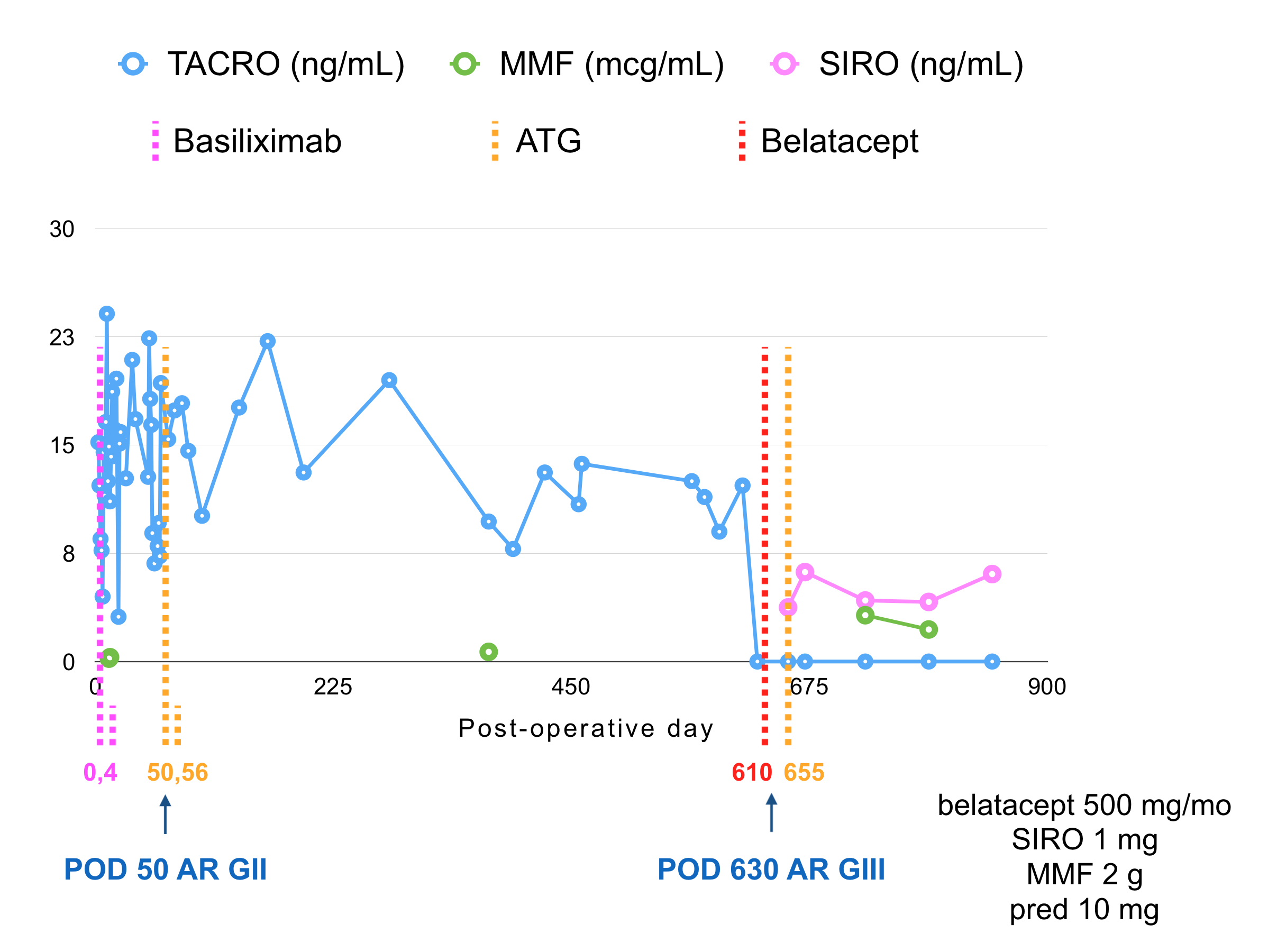Quadruple Therapy Tacrolimus-Sparing Belatacept-based Maintenance Immunosuppression after an Arm Transplant
Luis Landin1, Carlos Jimenez2.
1Plastic & Reconstructive Surgery, Hospital Universitario La Paz, Madrid, Spain; 2Nephrology Division, Hospital Universitario La Paz, Madrid, Spain
Introduction: Patients receiving vascularized composite allografts (VCA) are subject to calcineurin-inhibitor nephrotoxicity. Belatacept is no inferior to CsA after kidney transplantation, but there is little information on the use tacrolimus-sparing belatacept-based quadruple immunosuppressive regime after allogeneic reconstruction.
Materials: We present our experience along 20 months in a bilateral arm recipient whose maintenance regime was switched from tacrolimus to belatacept for subnephrotic proteinuria at 612 days posttransplant.
Results: Sirolimus was added when proteinuria decreased, and fifteen months after the switch creatinine clearance rose from 45 to 52 ml/min, and proteinuria descended from 2.9 g/day to 144 mg/day. The switch favored a grade III acute rejection episode that was treated with ATG and steroids. Sixteen months after the switch the patient suffered an aplastic anemia due to Parvovirus B19 infection, which was resolved after immunosuppression withdrawal and IVIG. This also triggered a new grade III rejection episode which could be successfully controlled after steroid treatment and immunosuppression adjustment.
Conclusions: Our results show mid-term survival of bilateral arm allografts and belatacept merits further evaluation for kidney protection, safety and efficacy in the field of VCA.

